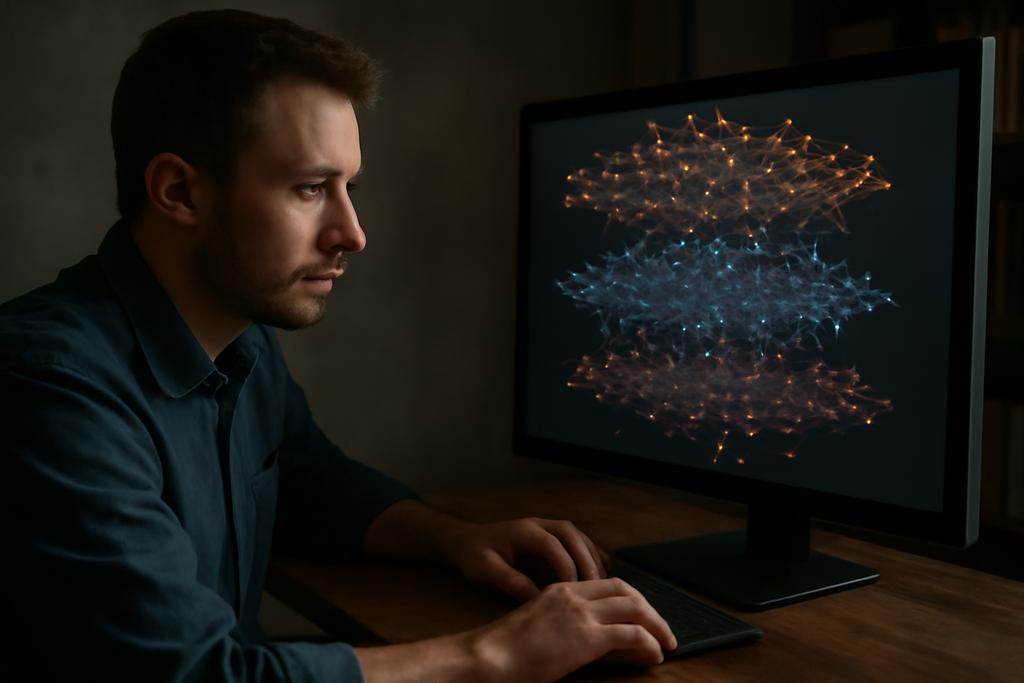Peering into the Complexity of Multiplex Networks
Imagine a vast network, not just of connections, but of interconnected layers. This isn’t some abstract concept; it’s the reality of many systems we encounter daily. Think of international trade, where countries (nodes) interact through various commodities (layers). Or consider brain networks, where brain regions (nodes) interact differently in each individual (layers). These are examples of multiplex networks, systems characterized by multiple layers of interconnected nodes. Understanding these systems demands sophisticated tools, capable of not only identifying individual connections but also of discerning patterns across layers.
The Challenge of Sparsity
One major hurdle in analyzing multiplex networks is sparsity. In many real-world scenarios, the connections within each layer are not dense. Information isn’t evenly spread; instead, it’s scattered, making the task of finding underlying patterns far more challenging. It’s like trying to piece together a puzzle with many missing pieces—the more pieces missing, the harder it is to see the full picture.
Previous approaches to understanding multiplex networks often relied on analyzing each layer individually. This layer-by-layer approach works reasonably well when data is plentiful. But when dealing with sparse networks, this strategy falls short; the missing pieces in each layer obscure the overall structure. You need a way to combine the information from all layers to reveal the bigger picture.
A New Tensor-Based Approach
A recent study by Marianna Pensky of the University of Central Florida presents a groundbreaking solution to this problem. Her research introduces a novel tensor-based methodology designed to analyze diverse multiplex networks, even when they are extremely sparse. The key is to leverage the power of tensors—mathematical objects that can represent multi-dimensional data—to pool information from all layers simultaneously.
Instead of tackling each layer separately, Pensky’s approach treats the entire multiplex network as a single, unified entity represented by a tensor. This allows for a holistic analysis, where patterns across layers can be identified even when individual layers are sparse. It’s as if she created a new lens to examine the puzzle, one that reveals the full image despite the missing pieces in each individual section.
The Power of Higher-Order Orthogonal Iterations
Pensky’s method employs a sophisticated algorithm called Higher-Order Orthogonal Iterations (HOOI). HOOI is a powerful tool for extracting information from high-dimensional data like tensors. In this context, HOOI helps to uncover the underlying structure of the multiplex network, even in the face of significant sparsity. It’s like a powerful searchlight cutting through the fog, highlighting the underlying organization of the network.
Implications and Future Directions
Pensky’s work has significant implications for a variety of fields. The ability to effectively analyze sparse multiplex networks opens up new possibilities for understanding complex systems in diverse domains. Imagine the impact this could have on fields like neuroscience, economics, social network analysis, and even climate modeling, where dealing with sparse and multifaceted data is commonplace.
The findings are especially important because they show that perfect clustering—the ability to correctly group similar layers together—is achievable even under extreme sparsity conditions. This surpasses the capabilities of earlier methods, which often required a much denser network for accurate results. This advance pushes the boundaries of what’s possible in network analysis.
Future work could focus on further refining the HOOI algorithm, exploring its applicability to even more complex network structures, and developing more intuitive ways to interpret the resulting insights. The possibilities are vast, and the implications for understanding the world around us are profound.










